This article was co-authored by Natalie Punt, DVM. Dr. Natalie Punt is a Veterinarian and the Founder and CEO of mPet- a smart phone app for pet owners to store, manage and transfer their pets medical records and health information. She specializes in small animal emergency and general medicine and veterinary practice economics. Dr. Punt holds a BS in Biochemistry and Molecular Biology from The University of California, Davis, an MS in Biochemistry from The University at Buffalo, and a DVM from Western University of Health Sciences.
This article has been viewed 38,444 times.
Lymphoma is a common cancer of the immune system which affects white cells called lymphocytes. This condition accounts for up to 24% of all canine cancers and around 83% of canine cancers affecting the blood system. Unfortunately, the Boxer breed is more likely to suffer from lymphoma than some other breeds. Treatments are available for lymphoma, but early diagnosis makes for a better chance of successful treatment. Learn how to spot a problem early so you can take your dog to the vet and give him a better chance of survival.
Steps
Recognizing The Symptoms of Lymphoma
-
1Pay attention to swollen lymph nodes. Swelling lymph nodes is one of the most recognizable symptoms for lymphoma. Swollen lymph nodes are most often noticed when the owner is petting the dog. The two most common places you may find them are under the jaw and behind the knee.[1]
- Lymph nodes that can be felt through the skin are paired, left and right. The swelling tends to be symmetrical, so if the lymph nodes in front of the left shoulder are enlarged, the one on the right side may be also.
- Places to feel for enlargement include under the chin, in front of the shoulders, in the armpits, in the groin, and behind the knees.
- The swelling of the lymph nodes is not painful for the dog, so your dog may show no symptoms of pain. Many dogs with lymphoma are not obviously ill when first taken to the vet, so the swollen lymph nodes may be the only symptom.
-
2Monitor for changes in eating habits. Lymphoma that attacks internal lymph nodes may make your dog change his eating habits. He may start losing weight and stop eating as much as he used to. Your dog may become thirstier than usual.[2]
- Your dog may also have stomach issues, like vomiting or diarrhea.
- Due to the increased thirst, your dog may urinate more.
Advertisement -
3Look for declining health. If the internal organs are flooded with white cells, then the dog may appear to suddenly decline. He may exhibit vague, general signs of ill health, including a lack of energy. Your dog may stop participating in his usual activities or lay around more than usual.[3]
- Your dog may also start breathing heavier and panting when there is no reason. Some dogs have episodes of fever.
- Your dog's face or legs may also swell.
-
4Check for anemia. Some cases of lymphoma involve anemia. The anemia is due to the bone marrow producing white cells rather than red cells. Your dog may also have bleeding problems, which is due to lack of production of platelets because of the higher production of white cells instead of red cells.[4]
- To check your dog for anemia, look at his gums. If he has gums that are paler in color than normal, he is probably anemic.
Diagnosing Lymphoma
-
1Take your dog to the vet. As soon as you believe your Boxer may have lymphoma, take him to the vet. The earlier you catch the lymphoma, the better chance your dog has for survival.
- If you feel any swollen lymph nodes, take your Boxer to the vet even if he is not showing any symptoms. Lymph nodes may appear without any other symptoms.[5]
- If your dog shows signs of general declining or poor health, you should take your dog to the vet immediately since those signs might be due to a number of serious conditions.
-
2Get a physical exam. The first thing your vet will do is perform a thorough physical examination. The vet will feel the abdomen to check for enlargement of the spleen and any enlarged lymph nodes.[6]
- The vet will also listen to the chest for any signs of difficulty breathing. She will also check to see if the heart is muffled as a result of lymph node enlargement.
-
3Perform blood tests. After the physical exam, the vet will perform a blood test to check organ function. The blood test will also look at the balance of red and white blood cells in the body.[7]
- This cannot diagnose lymphoma, but it can point to a problem. If the numbers of lymphocytes are abnormally high, the cause will need looking into.
- If the physical examination turns up anything in the abdomen or the chest, the vet may arrange an ultrasound. Ultrasound scans of the abdomen or radiographs of the chest will check for enlargement of inguinal lymph nodes and also organ enlargement. This helps the clinician decide how far advanced the cancer is, which helps decision making with regard to treatment and survival times.[8]
-
4Biopsy the lymph nodes. A definitive diagnosis is made by either biopsying one of the enlarged lymph nodes, or by taking a fine needle and sucking up a sample of cells through it. Then, the vet will examine the sample under a microscope to look at the cell types.[9] This allows the histologist to see which cells are present and if they are normal or abnormal.
- The dog will be put under anesthesia to perform the biopsy. Pain is usually minimal afterwards, but a vet can prescribe pain meds if your dog is in pain due to the biopsy.[10]
- In the event of a sample being inconclusive, there is now a blood test available which can confirm if lymphoma is present. The CBLT looks for biomarkers given off by lymphoma. It is also a useful way of giving advanced warning of this condition even before lymph node enlargement happens or as a warning that a relapse is about to happen.
Understanding Lymphoma
-
1Learn the treatment for lymphoma. If your dog has lymphoma, he can be treated and go into remission. Treatment of lymphoma consists of chemotherapy drugs given over a few months or weeks. In some cases, the dog may undergo radiation or surgery.[11]
- The success of treatment depends on how advanced the condition is when diagnosed, which cell type is producing the lymphoma, and how responsive that individuality is to treatment.
- Most dogs can go into remission and live nine to 19 months.[12]
-
2Learn what lymphoma is. Lymphoma arises as a result of the body producing too many white cells. These white cells are part of the immune system, and their job is to fight infections. However, when too many are produced, they overwhelm the body and get soaked up in the organs where they cause enlargement. The location of which organ soaks up the lymphocytes determines which type of lymphoma develops.[13]
- The main types of lymphoma are multicentric, mediastinal, gastrointestinal, cutaneous, and central nervous system.
- Multicentric is one of the most common forms of lymphoma since it affects the lymph nodes, which become swollen by the extreme number of white cells they contain. Some of these lymph nodes are internal while several can be felt through the skin.
-
3Know which breeds are at risk. Lymphoma can potentially affect any breed, although several breeds have an increased probability. The Boxer breed has an increased risk of lymphoma. Other predisposed breeds include the Basset Hound, Bullmastiff, Airedale, and Bulldog.[14]
- This condition affects both middle aged or older dogs. It is relatively rare in young animals.
Expert Q&A
-
QuestionHow do I make my dog comfortable with lymphoma?
 Natalie Punt, DVMDr. Natalie Punt is a Veterinarian and the Founder and CEO of mPet- a smart phone app for pet owners to store, manage and transfer their pets medical records and health information. She specializes in small animal emergency and general medicine and veterinary practice economics. Dr. Punt holds a BS in Biochemistry and Molecular Biology from The University of California, Davis, an MS in Biochemistry from The University at Buffalo, and a DVM from Western University of Health Sciences.
Natalie Punt, DVMDr. Natalie Punt is a Veterinarian and the Founder and CEO of mPet- a smart phone app for pet owners to store, manage and transfer their pets medical records and health information. She specializes in small animal emergency and general medicine and veterinary practice economics. Dr. Punt holds a BS in Biochemistry and Molecular Biology from The University of California, Davis, an MS in Biochemistry from The University at Buffalo, and a DVM from Western University of Health Sciences.
Veterinarian Feed them a nutritious, high-calorie diet! Cancer cells are very energetically demanding, so a very high-calorie diet is fantastic.
Feed them a nutritious, high-calorie diet! Cancer cells are very energetically demanding, so a very high-calorie diet is fantastic. -
QuestionWhat triggers lymphoma in dogs?
 Natalie Punt, DVMDr. Natalie Punt is a Veterinarian and the Founder and CEO of mPet- a smart phone app for pet owners to store, manage and transfer their pets medical records and health information. She specializes in small animal emergency and general medicine and veterinary practice economics. Dr. Punt holds a BS in Biochemistry and Molecular Biology from The University of California, Davis, an MS in Biochemistry from The University at Buffalo, and a DVM from Western University of Health Sciences.
Natalie Punt, DVMDr. Natalie Punt is a Veterinarian and the Founder and CEO of mPet- a smart phone app for pet owners to store, manage and transfer their pets medical records and health information. She specializes in small animal emergency and general medicine and veterinary practice economics. Dr. Punt holds a BS in Biochemistry and Molecular Biology from The University of California, Davis, an MS in Biochemistry from The University at Buffalo, and a DVM from Western University of Health Sciences.
Veterinarian They're going to naturally have those mutations in their cells, or they develop those somehow, which would, unfortunately, be through a mutation in the white blood cells that become cancer. This sometimes happens after being exposed to certain types of chemicals in the environment.
They're going to naturally have those mutations in their cells, or they develop those somehow, which would, unfortunately, be through a mutation in the white blood cells that become cancer. This sometimes happens after being exposed to certain types of chemicals in the environment.
Expert Interview

Thanks for reading our article! If you'd like to learn more about diagnosing lymphoma in boxers, check out our in-depth interview with Natalie Punt, DVM.
References
- ↑ https://vet.purdue.edu/pcop/canine-lymphoma-research.php
- ↑ https://www.akc.org/expert-advice/health/lymphoma-in-dogs-symptoms-diagnosis-and-treatment/
- ↑ https://vcahospitals.com/know-your-pet/lymphoma-in-dogs
- ↑ http://www.petmd.com/dog/conditions/cancer/c_dg_lymphoma
- ↑ https://vet.purdue.edu/pcop/canine-lymphoma-research.php
- ↑ https://vcahospitals.com/know-your-pet/lymphoma-in-dogs
- ↑ http://www.petmd.com/dog/conditions/cancer/c_dg_lymphoma
- ↑ https://vet.purdue.edu/pcop/canine-lymphoma-research.php
- ↑ https://vcahospitals.com/know-your-pet/lymphoma-in-dogs
- ↑ https://vet.purdue.edu/pcop/canine-lymphoma-research.php
- ↑ https://www.akc.org/expert-advice/health/lymphoma-in-dogs-symptoms-diagnosis-and-treatment/
- ↑ https://vet.purdue.edu/pcop/canine-lymphoma-research.php
- ↑ https://www.akc.org/expert-advice/health/lymphoma-in-dogs-symptoms-diagnosis-and-treatment/
- ↑ https://vcahospitals.com/know-your-pet/lymphoma-in-dogs
About This Article
To diagnose lymphoma in boxers, pay attention to swollen lymph nodes under your dog’s jaw or behind its knee. You might also notice that your dog is losing weight, doesn’t eat as much as it used to, and is thirstier than usual. Another symptom is anemia, which you can check by looking to see if your dog’s gums are paler in color than normal. If you suspect your dog may be suffering from lymphoma, take it to the vet immediately since the earlier you catch the disease the greater your dog’s chances of survival. At the vet, you’ll need to authorize a physical exam, blood work, and possibly a biopsy of the lymph nodes. For more tips from our Veterinary co-author, including how to treat lymphoma in dogs, keep reading!



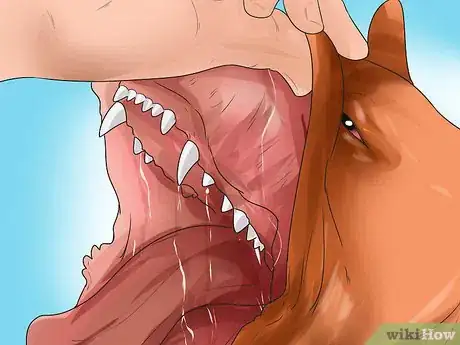
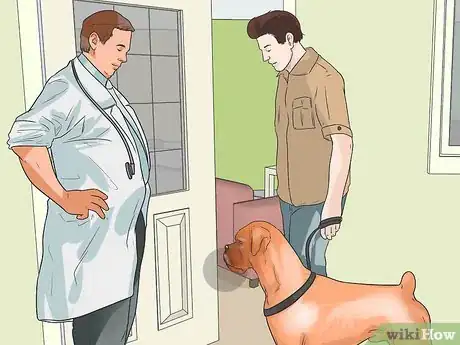
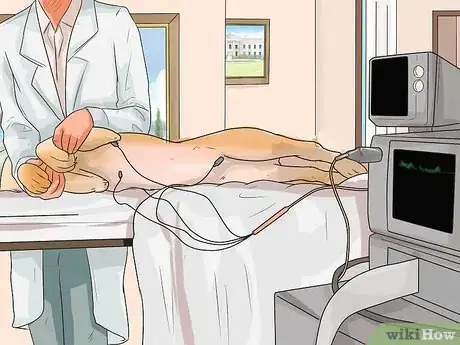
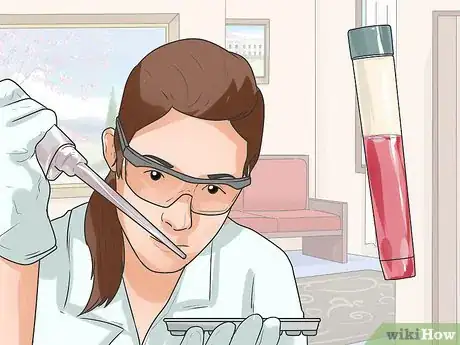
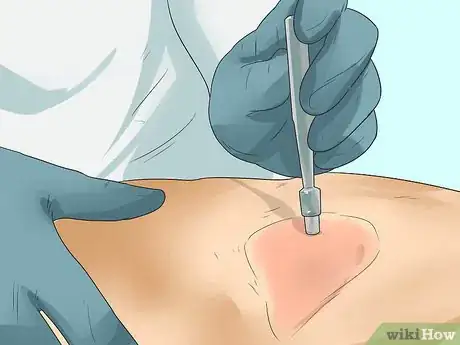

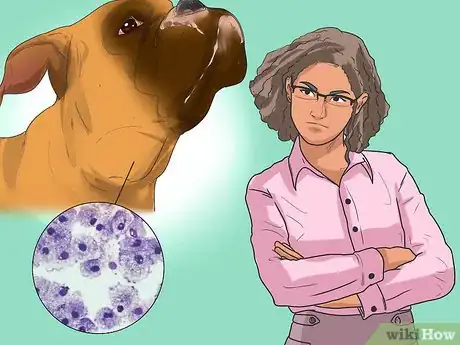

















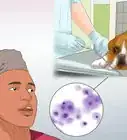



































Medical Disclaimer
The content of this article is not intended to be a substitute for professional medical advice, examination, diagnosis, or treatment. You should always contact your doctor or other qualified healthcare professional before starting, changing, or stopping any kind of health treatment.
Read More...